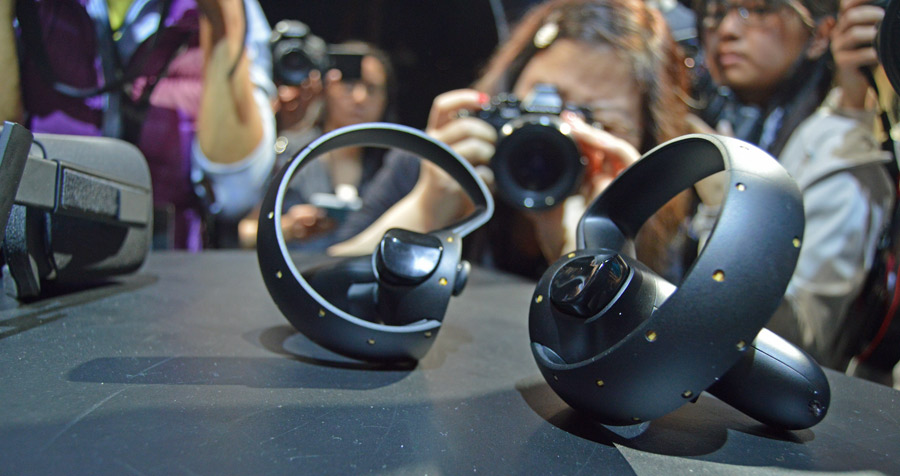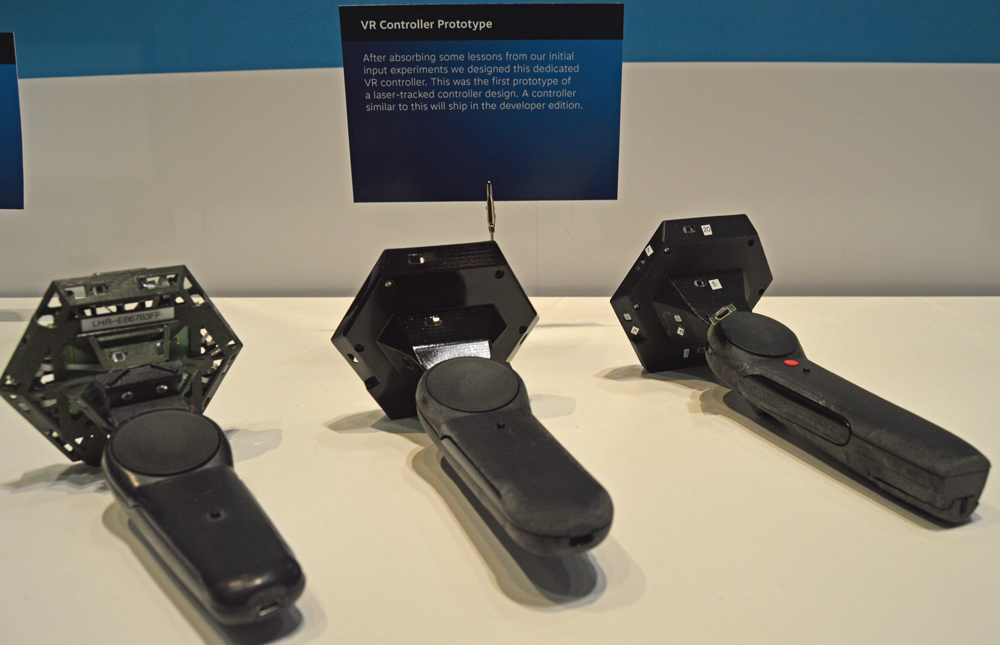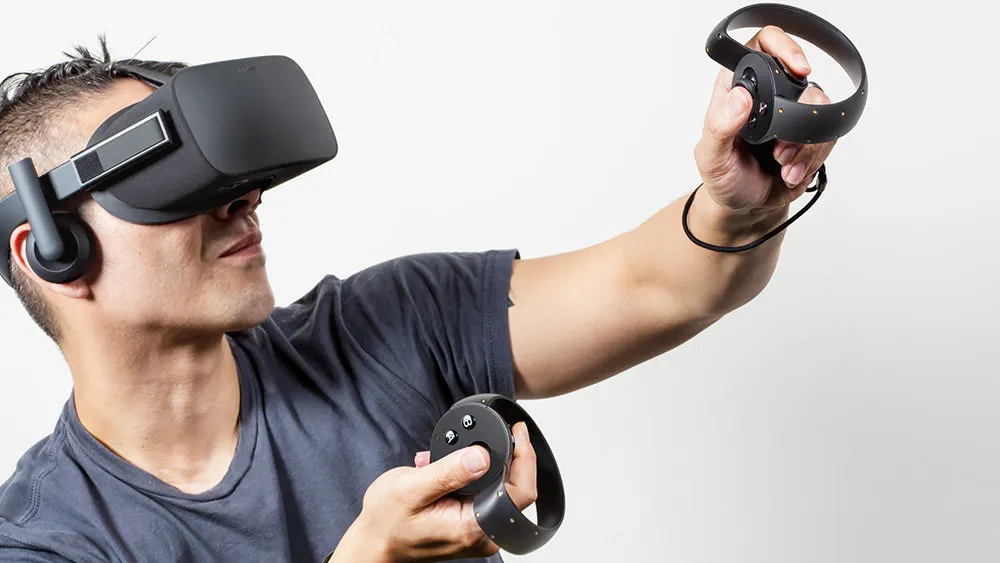In a candid interview at this year’s Oculus Connect, the annual virtual reality developer conference in Los Angeles, California, Palmer Luckey (founder of Oculus VR) provided insight into how the Touch controllers deal with radio interference.
Everyday, wireless signals are streamed continuously all around us; each transmitting data at various frequencies. If several devices operating on the same frequency are within range of each other, interference can occur. Despite the technical challenges involved, Oculus engineers have figured out how to solve the interference problems associated with real-time transmissions, while at the same time eliminating the need for external base stations or receivers.
When our UploadVR team asked how the Touch controllers are dealing with interference, Palmer Luckey responded causally, “through a lot of work.”
“Having really low latency links that don’t dump too many packets is a really tricky situation. It’s a tricky thing to pull off especially in situations like Connect where you’ve got 10 of these things all running in close proximity well within range of each other’s base station and receivers. Although it’s not a base station anymore, it’s integrated in the headset.
We’ve managed to pull it off. We have world class analog engineers and radio engineers who have been able to make all of this work and get it to pass FCC to move.

This is good news for developers looking to create content with the Touch controllers for the following reasons:
One: No USB ports are needed for this. Instead, the wireless controllers communicate directly with the headset internally, allowing for other hardware to be plugged into the computer.
Two: Demoing Touch controllers in conference setting like Oculus Connect is doable. Even if other devices are running on the same frequency, each VR system should be able to avoid / correct interference issues internally.
When pressed on what the exact frequency the Touch controllers are operating on, Luckey disappointingly declined to comment. But, he did mention that “eventually FCC filings go public.” However, even though the Oculus co-founder didn’t give up the details, it is easy to speculate what radio band they are running at by looking at what Valve is doing.
Through a series of direct messages on Twitter with Alan Yates, Hardware Engineer at Valve, we uncovered that the Vive controllers transceive data at 2.4 GHz. This puts them on the same range as standard WiFi networks, Bluetooth connections, microwaves ovens, car alarms, baby monitors, and ZigBee devices. With so many consumer devices on the market that operate on 2.4 GHz, dealing with interference is a critical step in order to provide a comfortable virtual reality experience.
Instead of opting for a Bluetooth connection which can be paired to USB receivers or even smartphones, Valve has created their own protocol similar to the one found in the steam controller. Originally they included multiple dongles attached to a computer for data collection in the Vive prototypes. From there, transceivers were added into the latest versions of the headsets, unknowingly in parallel with what Oculus was developing at the same time with Touch.
In regards to Valve, the Vive controllers deal with interference by hopping channels within the radio band. Bluetooth operates in the same way. It is unclear if Oculus is approaching the problem in a similar fashion, but they are most likely hopping channels in order to meet FCC regulations. Furthermore, it is likely that they have created their own protocol as well. However, none of this has been confirmed by Oculus as of yet.

We do know though that the current Touch controllers are not able to pair to a smartphone at this time, meaning that they are probably not operating with Bluetooth protocols.
Palmer Luckey stated in our interview that “the touch that you’re using today is probably never going to work with Gear. There’s different sets of technologies that would enable six degree freedom motion tracking with mobile virtual reality devices, and they’re going to work in different ways.” However, he mentioned that “if that were a technical challenge, it would not be hard to solved. It’s definitely not what’s holding it back.”
Luckily, developers won’t have to worry about the frequency ranges of each the Touch or Vive controllers. From what it sounds like, and after testing both platforms multiple times myself, the devices work well enough that those creating content can focus more on the gameplay rather than the technical details of the controllers themselves. Still, it will be interesting to know what frequency Oculus is using with Touch.
As more information surfaces, we’ll post another article diving deeper into the capabilities of both VR systems and how Oculus and Valve are dealing with intereference issues. Once the FCC filings go public, will report back with more details. In the meantime, sit back and think about all the amazing content that will come out of this for both platforms.




























